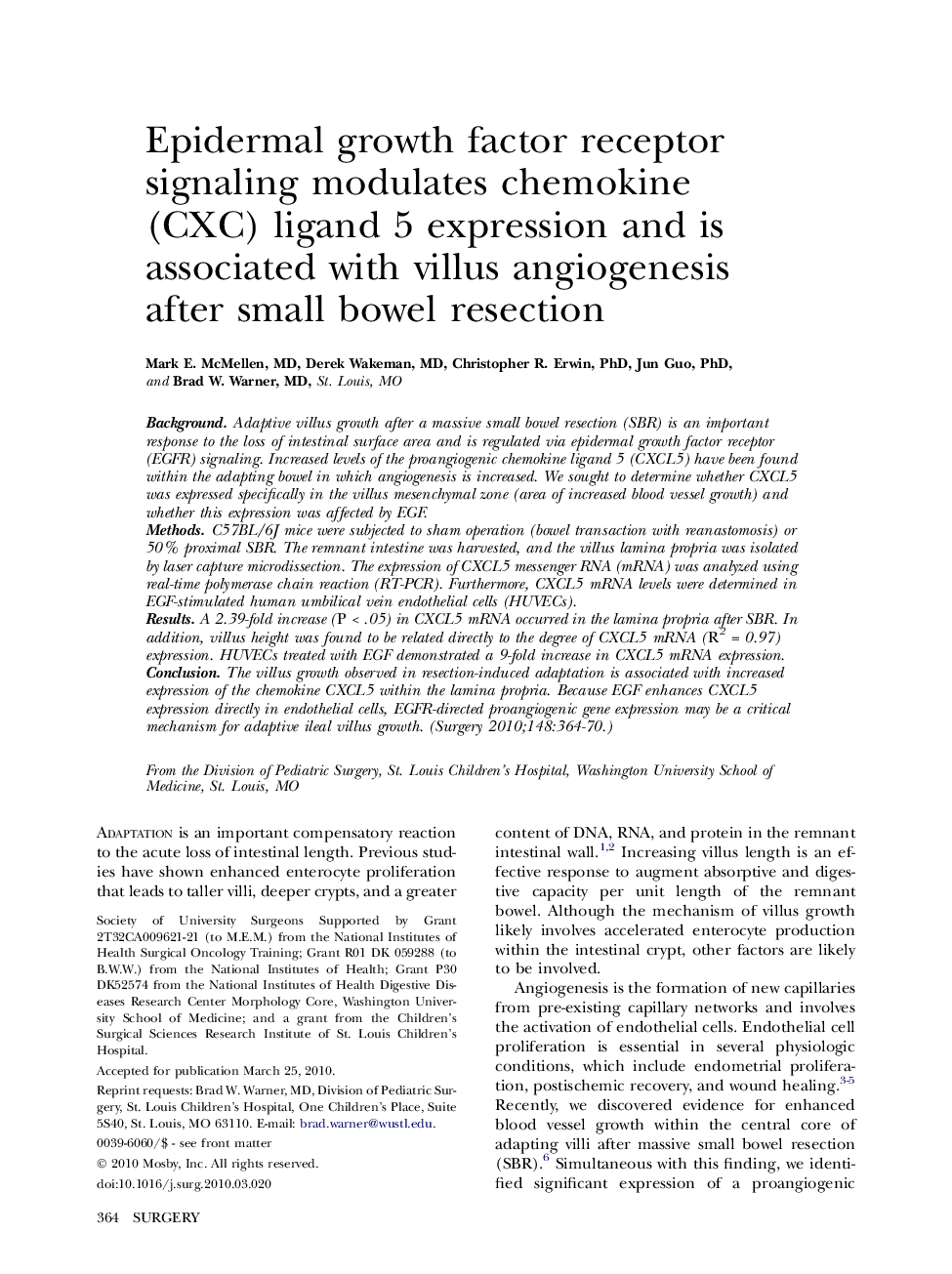| Article ID | Journal | Published Year | Pages | File Type |
|---|---|---|---|---|
| 4308536 | Surgery | 2010 | 7 Pages |
BackgroundAdaptive villus growth after a massive small bowel resection (SBR) is an important response to the loss of intestinal surface area and is regulated via epidermal growth factor receptor (EGFR) signaling. Increased levels of the proangiogenic chemokine ligand 5 (CXCL5) have been found within the adapting bowel in which angiogenesis is increased. We sought to determine whether CXCL5 was expressed specifically in the villus mesenchymal zone (area of increased blood vessel growth) and whether this expression was affected by EGF.MethodsC57BL/6J mice were subjected to sham operation (bowel transaction with reanastomosis) or 50% proximal SBR. The remnant intestine was harvested, and the villus lamina propria was isolated by laser capture microdissection. The expression of CXCL5 messenger RNA (mRNA) was analyzed using real-time polymerase chain reaction (RT-PCR). Furthermore, CXCL5 mRNA levels were determined in EGF-stimulated human umbilical vein endothelial cells (HUVECs).ResultsA 2.39-fold increase (P < .05) in CXCL5 mRNA occurred in the lamina propria after SBR. In addition, villus height was found to be related directly to the degree of CXCL5 mRNA (R2 = 0.97) expression. HUVECs treated with EGF demonstrated a 9-fold increase in CXCL5 mRNA expression.ConclusionThe villus growth observed in resection-induced adaptation is associated with increased expression of the chemokine CXCL5 within the lamina propria. Because EGF enhances CXCL5 expression directly in endothelial cells, EGFR-directed proangiogenic gene expression may be a critical mechanism for adaptive ileal villus growth.
